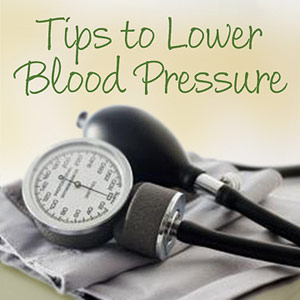(ThyBlackMan.com) It is no surprise that a diet high in salt content will likely contribute to high blood pressure. But, it also might seem difficult to adjust your diet to benefit your health, while still making your taste buds dance. As you look for ways to lower your blood pressure, here are five high blood pressure food culprits and their substitutes that won’t have you reaching for the salt shaker or spending all your time in the kitchen.
Processed Meats
Instead of packing a deli meat sandwich for lunch, opt for a veggie sandwich with a low sodium hummus or a natural, no-salt peanut butter and honey sandwich.
If meat on your sandwich is a must have, make sure to find a low sodium variety and pile on the veggies. Keep meat portions small; a three-ounce serving of most processed meats, including ham, bacon, sausage, hot dogs and lunch meat, have nearly 1,200 milligrams of sodium. If you’ve been diagnosed with high blood pressure, your daily quota for sodium will likely be 1,500 milligrams per day, meaning with one sandwich, you could easily exceed your daily quota or come close to it.
Boxed and Frozen Meals
Frozen and boxed meals, whether mac and cheese, pasta dishes or rice stir fry bases, will quickly increase your daily sodium intake. While these meals are convenient, by planning ahead a bit, you’ll be able to reduce your salt intake without completely sacrificing convenience.
fry bases, will quickly increase your daily sodium intake. While these meals are convenient, by planning ahead a bit, you’ll be able to reduce your salt intake without completely sacrificing convenience.
Instead of buying boxes pasta meals that include a seasoning packet that is high in sodium, purchase a package of whole wheat pasta and an assortment of raw veggies like zucchini, mushrooms, onion and peppers. Sauté the veggies and toss them with the pasta along with olive oil and seasonings like basil, garlic and oregano. You’ll have a delicious alternative to the boxed meal that won’t keep you in the kitchen for hours.
Canned Vegetables
All vegetables are healthy, right? Well, maybe not. Canned vegetables can be filled with preservatives, sauces, seasonings, and extra salt that negate much of their benefit. A cup of canned cream-style corn can contain more than 700 milligrams of sodium. So, be sure to read the label. Always opt for “no salt added” or reduced sodium” varieties of canned vegetables, and when possible, purchase raw or frozen vegetables. As you wander through the produce section or a farmers market, selected fruits and vegetables that are high in potassium, which is a key ingredient to lowering blood pressure. Potassium-rich produce includes sweet potatoes, tomatoes, potatoes, bananas, peas and cantaloupe. Just be sure you don’t over salt your veggies when preparing them!
Instant or Canned Soup
Another high-sodium food option is instant or canned soups. So before popping open your favorite can of chicken noodle soup, which contains as much as 760 milligrams of sodium in just one cup, consider your options. First, only buy canned soups marked as “reduced sodium” or “no salt added.”
If you’re making a cup of instant soup or noodles, only use half the seasoning packet. However, an even healthier option is to make your own soup. Set aside a few hours to make multiple pots of soup, using either reduced sodium broths or your own, freeze the soup, and then, you’ll have the convenience without the extra salt.
Sugar-Sweetened Beverages
In addition to watching your salt intake, drinking sugar-sweetened beverages has also been linked to increased blood pressure and a greater risk for developing hypertension. So instead of automatically reaching for a soft drink or fruit punch beverage, consider other options that don’t lack in flavor but are also low in sugar. If water is not your go-to beverage, opt for a sparkling water with lemon. You’ll have the carbonation of a soft drink and the refreshing flavor of lemon without the extra calories and sugar. Or if you are a fan of tea, pass on the sugary sweet tea and opt for a glass of hibiscus tea. Researchers have shown that those who drink three cups of a hibiscus tea daily can lower their systolic blood pressure by seven points in six weeks, on average.
According to a recent study, high blood pressure is one of the most preventable conditions, and yet, it contributes to more than 15 percent of deaths in the United States. By making adjustments in your diet, you’ll be able to start down the path to a healthier heart. Be sure to consult a physician who might also prescribe medication to help you achieve a healthy blood pressure.
Staff Writer; Lisa Adams

















Leave a Reply